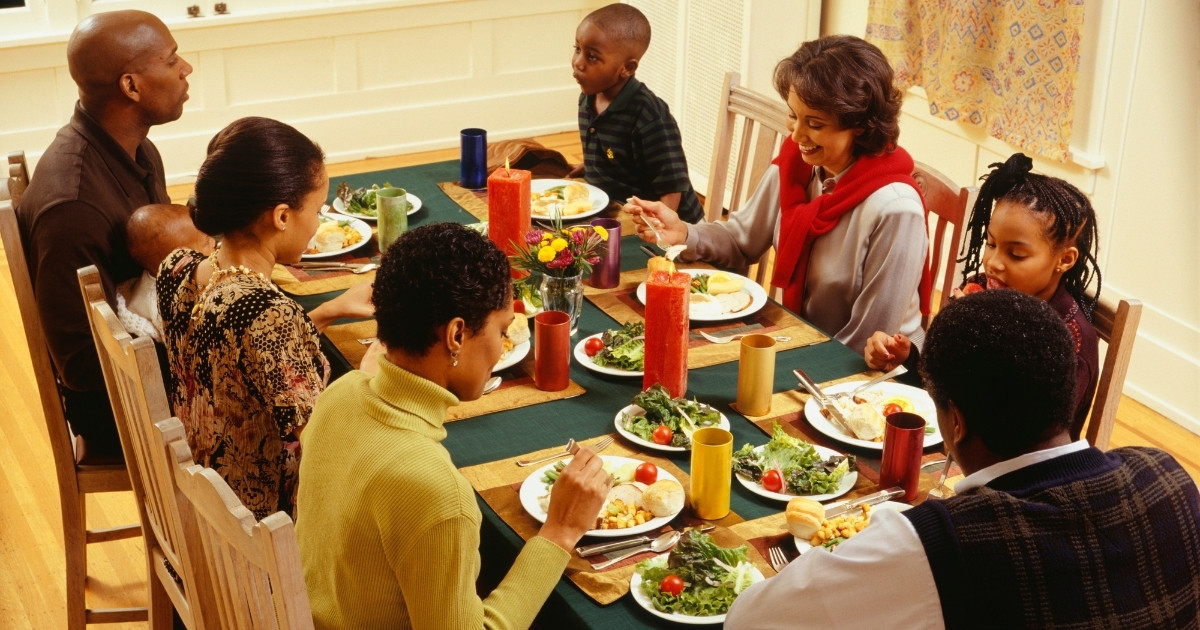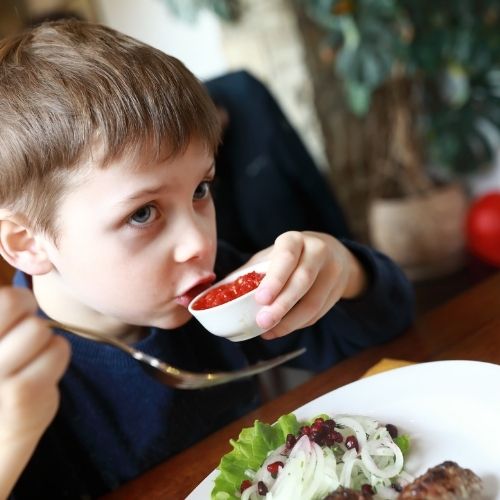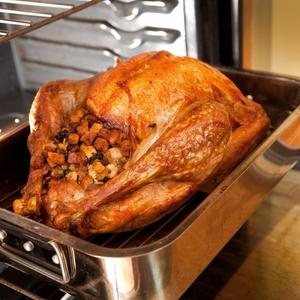
Category: Cooperative Extension

How to model healthy holiday eating for your children
November 08, 2021 Written by Zoe Gobeille, Community Nutrition Student & Diane Oliver, MPH, RDN, LDN — Extension Agent
With temperatures starting to cool down and the leaves beginning to turn, it is once again the start of the holiday season. The holidays bring about a reminder of how grateful we are for time spent with family and friends, and this year it will be extra special because COVD-19 has kept us from our loved ones for so long. During the pandemic, parents were role models for their children, wearing masks, washing hands and social distancing. Now it's time for parents to once again lead by example and make healthy choices at holiday meals.

Why Making Healthy Holiday Food Choices is Important
YOU ARE A ROLE MODEL
Parents play a powerful role in creating their child's relationship with food, providing both influential genes and a formative environment. Because children so often model parental behavior, it is vital to start teaching your children at a young age how to stay healthy during the holidays. Kids develop food preferences as well as eating behaviors through their parents. For example, if a child sees Mom turn up their nose to Brussel sprouts, they will likely follow suit. Kids naturally love sweet and salty food and dislike bitter or sour foods but introducing them early to healthy foods can increase consumption. Your child may not enjoy it at first but remember to try more than once with new foods because repeated experiences may change their food preferences.
CHILDHOOD OBESITY IS ON THE RISE
The prevalence of adult obesity in the United States is no secret, but it's time to talk about the increasing prevalence and risks it poses to our children. "For children aged 2-19 years in 2017-2018 the prevalence of obesity was 25.6% among Hispanic children, 24.2% among non-Hispanic Black children, 16.1% among non-Hispanic White children, and 8.7% among non-Hispanic Asian children."1
While obesity poses significant current risks to children, it also creates future health risks. Children who have obesity are more likely to become adults with obesity. Adult obesity is associated with an increased risk of several serious health conditions, including heart disease, type 2 diabetes and cancer. If children have obesity, their obesity and disease risk factors in adulthood are likely to be more severe. Obesity affects children's physical well-being and their social, emotional and psychological health.4 While overeating at the holiday table will not directly cause obesity, being mindful of our food choices in tempting situations teaches our children and us how to lead a healthy lifestyle overall.
Children with obesity are more likely to have:4
- High blood pressure and high cholesterol, which are risk factors for cardiovascular disease.
- Increased risk of impaired glucose tolerance, insulin resistance and type 2 diabetes.
- Breathing problems, such as asthma and sleep apnea.
- Joint problems and musculoskeletal discomfort.
- Fatty liver disease, gallstones and gastro-esophageal reflux (i.e., heartburn).
Childhood Obesity is also related to:4
- Psychological problems such as anxiety and depression.
- Low self-esteem and lower self-reported quality of life.
- Social problems such as bullying and stigma.
Everything is okay in moderation. Healthy eating is a lifestyle; there is no magic bullet when it comes to weight control.

Tips for Healthy Holiday Food Choices
NEVER GO HUNGRY
Mark all of the holiday events you'll be attending on your calendar so that you'll remember to plan ahead. If the event is in the evening, have a healthy breakfast and satisfying lunch, with a light snack before the event to avoid overindulging later. When you arrive at the party, don't rush mindlessly to the food table to fill up on snacks. Instead, assess your hunger. Once you feel hungry, take a look at all the food that's available. Becoming aware of all the options will help you make more mindful choices. 5,6
BE A ROLE MODEL
Keep in mind that kids model their parents, show your children that you eat a variety of foods and monitor your portion sizes at holiday celebrations.7
SHIFT THE FOCUS
Center your holiday celebration around spending time with family and friends instead of food. Start a new tradition that doesn't revolve around food, such as a family walk to see lights or going to see a holiday concert. Find ways to swap ingredients in holiday recipes for healthier alternatives:
- Make your stuffing with whole grain bread.
- Go for an oven-roasted turkey over a deep-fried turkey.
- In dips, substitute sour cream for plain greek yogurt.
- When baking: Swap coconut milk for heavy cream/condensed milk, swap half of the flour called for to whole-wheat flour.
- When baking, use dark chocolate instead of milk chocolate, use a 1-to-1 ratio and swap unsweetened applesauce for oil.5,7
"CHEAT A LITTLE" AND PRIORITIZE YOUR FAVORITES
Keep in mind that there are no good or bad foods. Everything is okay in moderation. The holidays only come around once a year, and bring with them some of our favorite entrées, sides and desserts. But remind yourself there will be other holiday parties that bring the opportunity for you to indulge, so try to prioritize your favorites.
When teaching children about healthy holiday eating, keep in mind that children are concrete thinkers. Kids see the world in black and white, right or wrong and good or bad. As parents, it is important to emphasize that there are no good or bad foods; everything is okay in moderation. Healthy eating is a lifestyle; there is no magic bullet when it comes to weight control. The holidays are a magical time of year filled with family, friends, lots of love and even more food. While making healthy holiday food choices may seem like a daunting task, remember that it is possible with a dash of motivation, a pinch of good mentality and a spot of planning.
